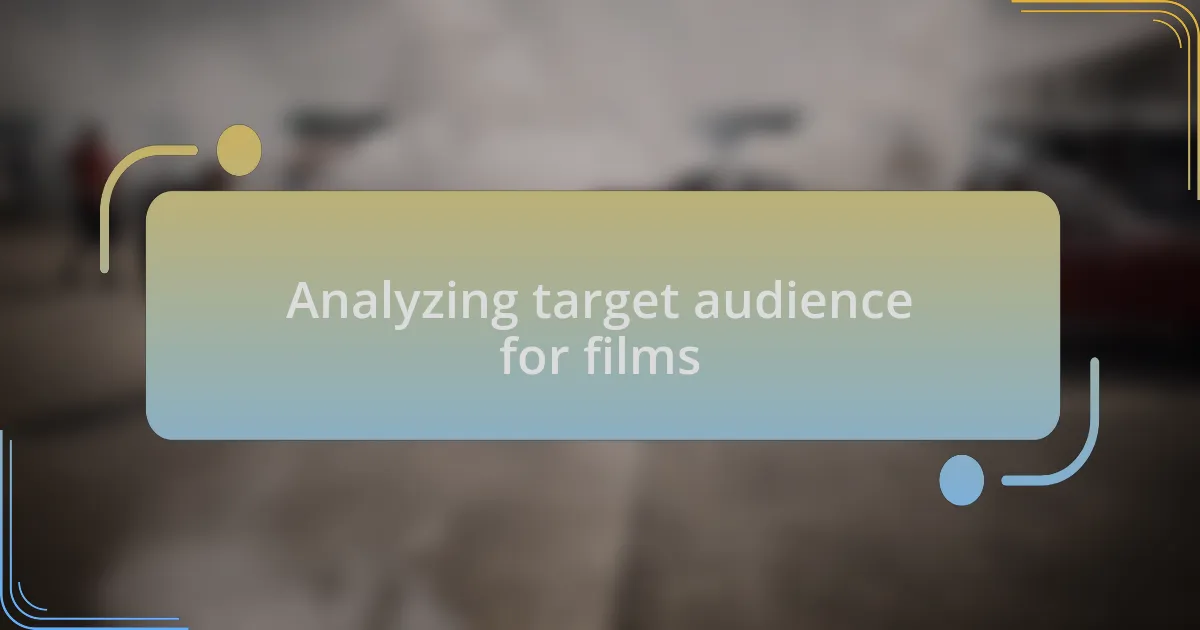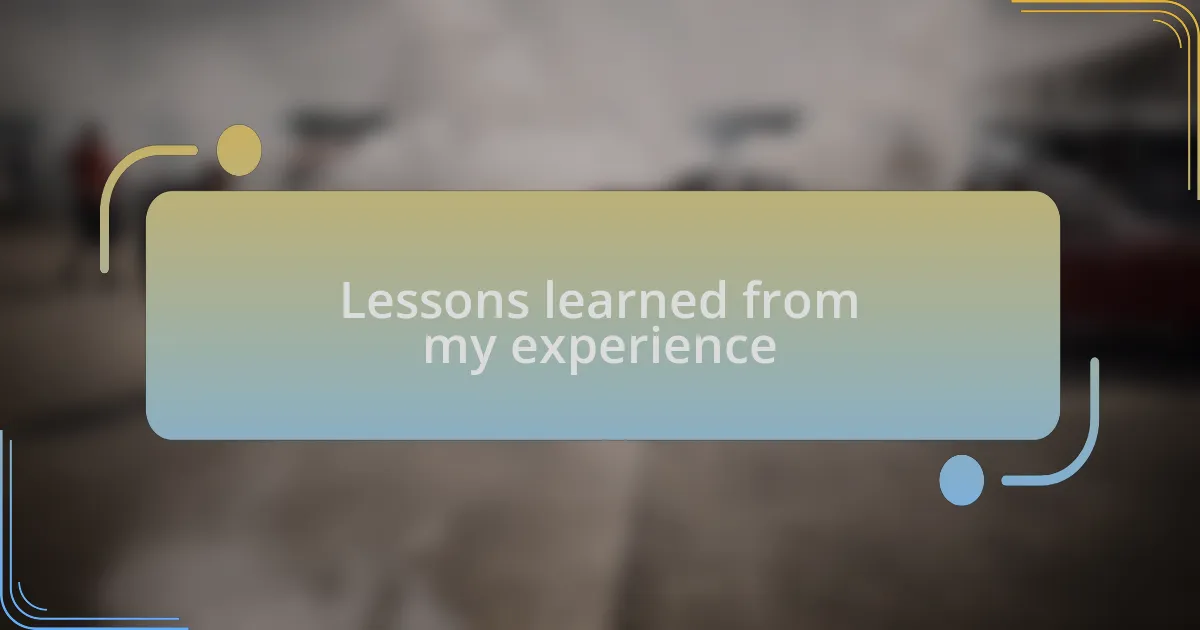Key takeaways:
- Distribution is crucial for connecting films to audiences and requires strategic planning across various channels, especially digital platforms.
- Understanding the target audience through demographics and psychographics informs creative decisions and enhances a film’s resonance.
- Flexibility in marketing strategies is essential; adapting to audience engagement patterns can significantly improve a film’s visibility.
- Building partnerships and establishing feedback loops can amplify reach and improve future projects through constructive criticism.

Understanding distribution in film production
Distribution is the bridge that connects your film to the audience, and it plays a crucial role in its success. I remember feeling the weight of this responsibility when I first sat down to map out my own distribution plan. How do you ensure that your film reaches the right audience? It’s a question that can keep any filmmaker up at night.
Understanding the various distribution channels is vital. From traditional theaters to digital platforms like streaming services, each option offers unique benefits and challenges. Personally, I’ve found that embracing the digital landscape not only broadens my reach but also allows me to engage with viewers in a way that feels more personal and intimate.
Moreover, every decision in the distribution process should reflect the film’s identity and the audience’s expectations. For instance, I once tailored a marketing strategy for a quirky indie feature, launching an online campaign that resonated authentically with the target demographic. Seeing genuine enthusiasm from the audience was one of the most rewarding experiences of my career. Isn’t it incredible how a well-thought-out distribution strategy can elevate the entire cinematic experience?

Analyzing target audience for films
When analyzing the target audience for films, it’s essential to understand their preferences, habits, and viewing environments. I recall conducting surveys for a short film project; the responses shaped not just my marketing strategy but also the narrative style of the film itself. It’s fascinating how audience insights can steer creative decisions, isn’t it?
Demographics are only half the battle; psychographics—what makes your audience tick—are equally important. For one project, I engaged in deep discussions with my audience on social media. Their feedback revealed emotional connections to themes I hadn’t anticipated, leading me to incorporate these elements more prominently in the final edit. Who knew that a simple interaction could uncover such rich layers of storytelling?
In the end, fostering a dialogue with your audience can illuminate their expectations and desires. I’ve learned that every interaction—from a film screening to a tweet—offers a chance to refine your film’s resonance. Isn’t it rewarding to think that building a relationship with your viewers can lead to a more successful film?

Lessons learned from my experience
Reflecting on my journey, I’ve learned the importance of adaptability in distribution. There was a time when I invested heavily in traditional marketing channels for a short film, only to find that the audience was more engaged through digital platforms. This realization pushed me to pivot my strategy, leading to a more effective outreach that enhanced my film’s visibility. Do you ever find yourself sticking to old habits even when the landscape changes?
Another crucial lesson I’ve gleaned is the value of building partnerships. For one project, I collaborated with local influencers who shared my film’s vision. Their platforms provided a gateway to new audiences, and it was rewarding to see how loyalty and shared passion could amplify the film’s reach. Have you considered the impact of leveraging others’ networks in your distribution plan?
Finally, I can’t emphasize enough the significance of feedback loops. After each screening, I made it a point to gather thoughts from the audience, both positive and critical. This open dialogue took my future projects to new heights, as I learned to embrace constructive criticism rather than fear it. What’s been your experience with gathering audience feedback, and how has it shaped your work?